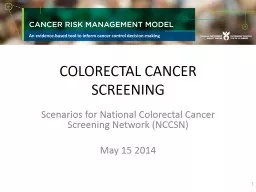PPT-Faecal Immunochemical Testing (FIT). Update on National
Author : brianna | Published Date : 2024-03-13
R oll O ut SW Clinical Senate 27 th September 2018 James Bolt Head of Public Health Commissioning NHS England South West South 2 Contents NHSE roles and responsibilities
Presentation Embed Code
Download Presentation
Download Presentation The PPT/PDF document "Faecal Immunochemical Testing (FIT). Upd..." is the property of its rightful owner. Permission is granted to download and print the materials on this website for personal, non-commercial use only, and to display it on your personal computer provided you do not modify the materials and that you retain all copyright notices contained in the materials. By downloading content from our website, you accept the terms of this agreement.
Faecal Immunochemical Testing (FIT). Update on National: Transcript
Download Rules Of Document
"Faecal Immunochemical Testing (FIT). Update on National"The content belongs to its owner. You may download and print it for personal use, without modification, and keep all copyright notices. By downloading, you agree to these terms.
Related Documents














